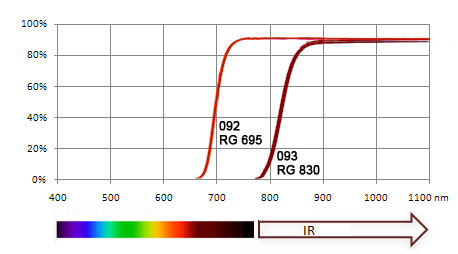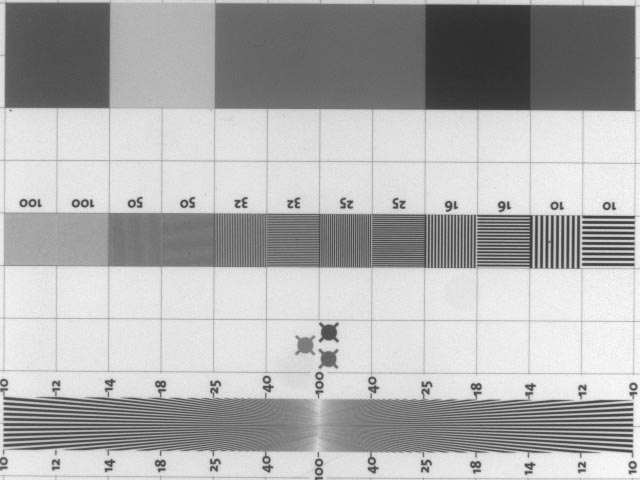Colour filters
Colour filters are absorption filters made of coloured glass which absorb light in specific wavelength ranges in varying degrees and let other ranges pass to a major extent. Depending on the technical function and translucence in specific wavelength ranges, these absorption filters are called colour filters, daylight elimination filters, high pass filters, etc.
Classic colour filters
They are typically used for monochrome cameras in order to filter light from the entire spectrum in such a way to produce something like coloured illumination.
 |
The filter glasses (very often coloured glasses by Schott or Hoya) are red, green, orange, blue, or yellow. They let the wavelengths of their own colours pass to the greatest extent (approx. 90 per cent) and block any other. A portion of the rays are reflected at the glass surface. If you use a colour filter with white illumination, you must expect a significant loss of light. They work according to the principle of subtractive colour mixing and due to their design they are not as narrow-banded as interference filters.
 |
Example: the red filter - an absolute must
In this way equally bright green or red which could not be distinguished in the monochrome camera image can be differentiated by using a red filter: the red is lightened up, the green of the test object is darkened. However, the prerequisite for this is that white light is available as a basis, from the spectrum of which suitable ranges are filtered out.
Examples of colour filtering:
Colour image
Monochrome image
Mono & red filter
In addition to the accentuation of test object colours, particularly a red filter (091 / RG 630) can render further important services:
 |
It lets pass nearly the entire light quantity of a red LED lighting or a red laser, but blocks many daylight influences and fluorescent lighting effects. In this way, interference due to effects of extraneous light can significantly be reduced. This standard filter should be used on any red LED lighting. Much more robust applications are available for very little money!
Laser line with daylight
Laser line with red filter
Daylight elimination filters
This usually refers to high pass filters which let pass high wavelength ranges of the spectrum. They are normally used in combination with infrared lighting. The transmission in infrared radiation is at the maximum, daylight and UV are blocked and not registered by the camera sensor. Daylight influences are almost completely avoided in this way.
 |
Non-visible infrared lighting is used wherever there is much extraneous light (machines close to windows or skylight) or when industrial lighting could disturb the operators (at a manual work station). Depending on the wavelength ranges of the infrared lighting used, there are suitable filters which let pass the light only from 800 or 900 nm.
These filters have a deep red colour and are therefore not suitable for colour cameras.












